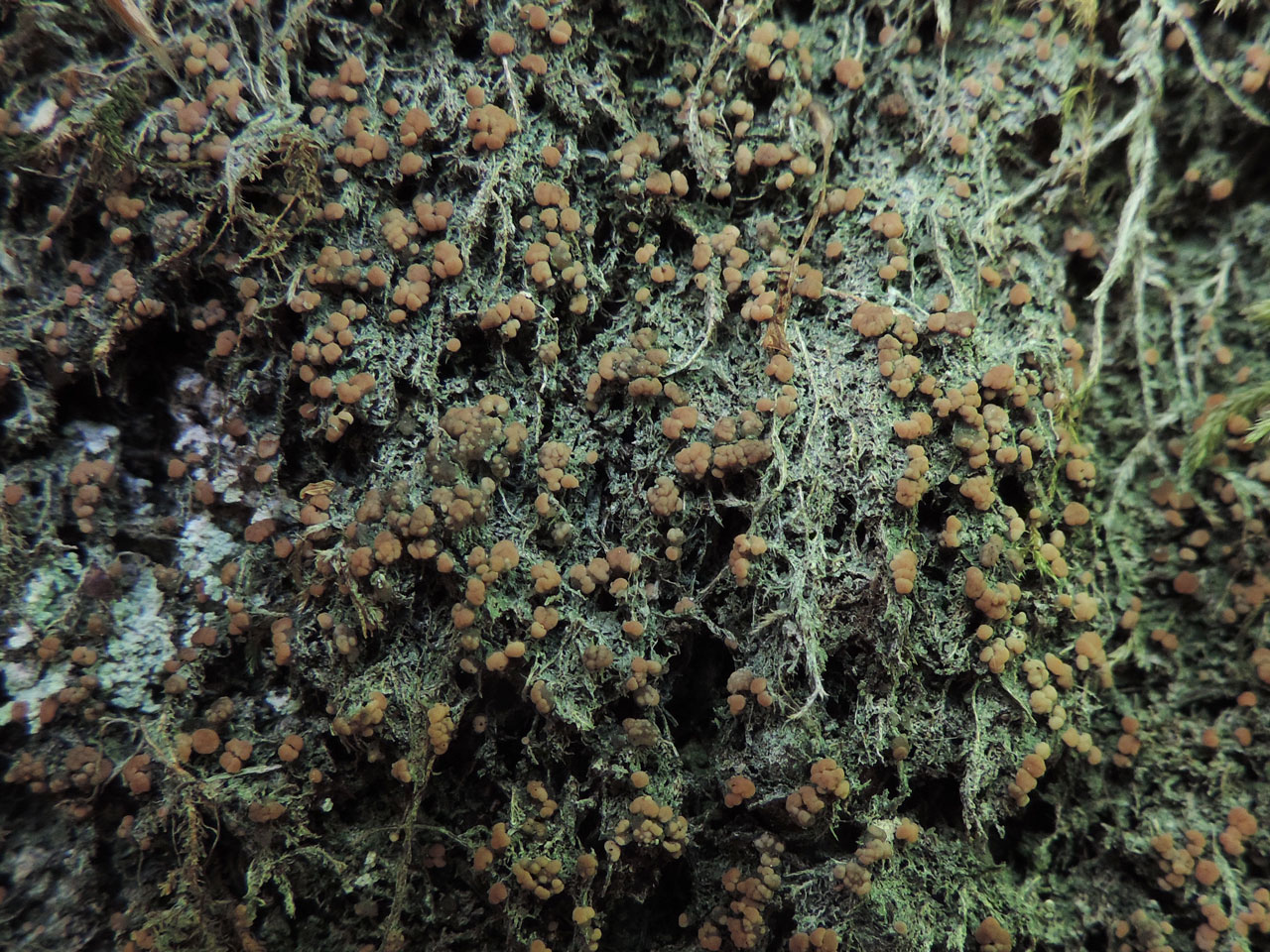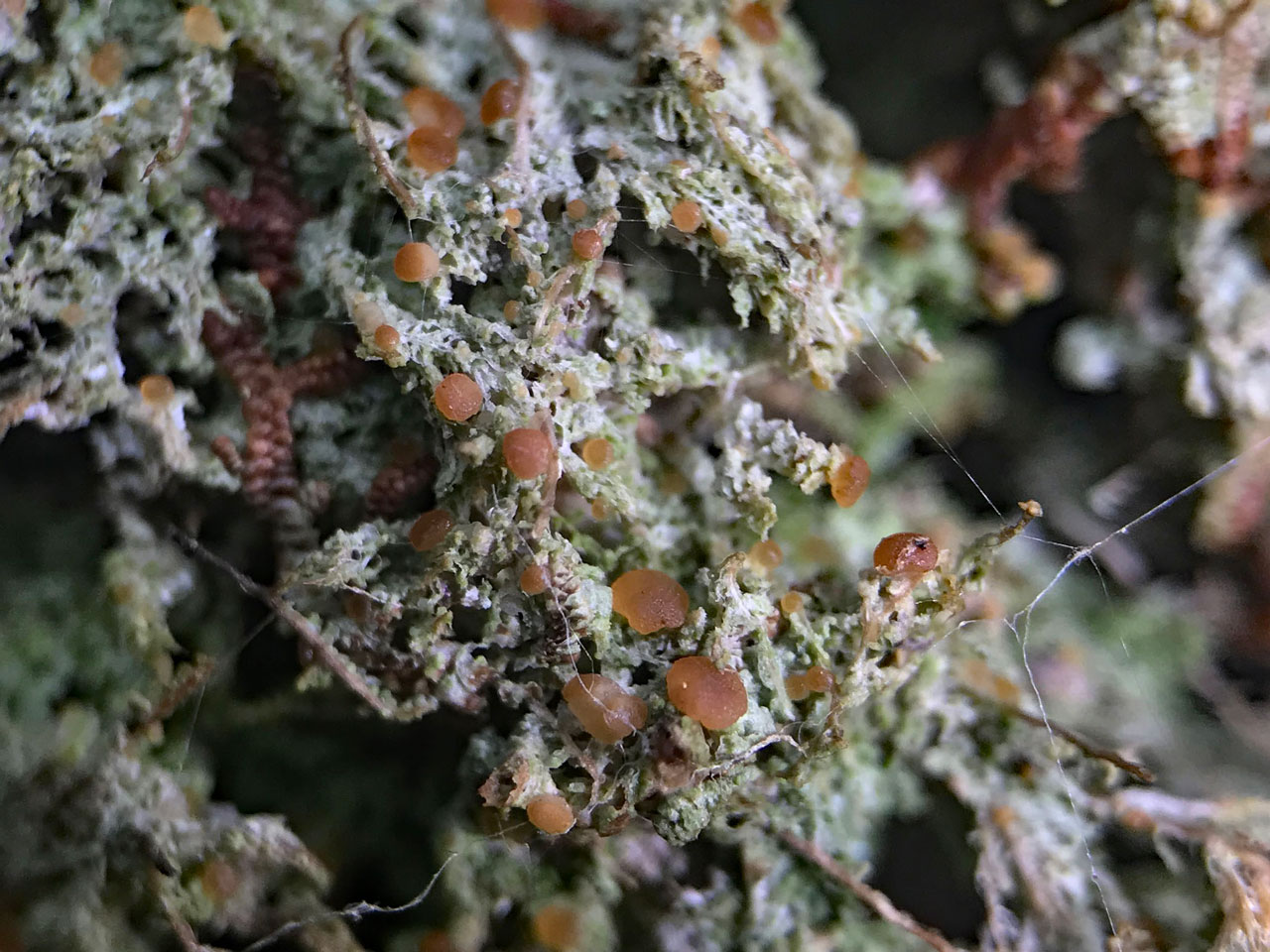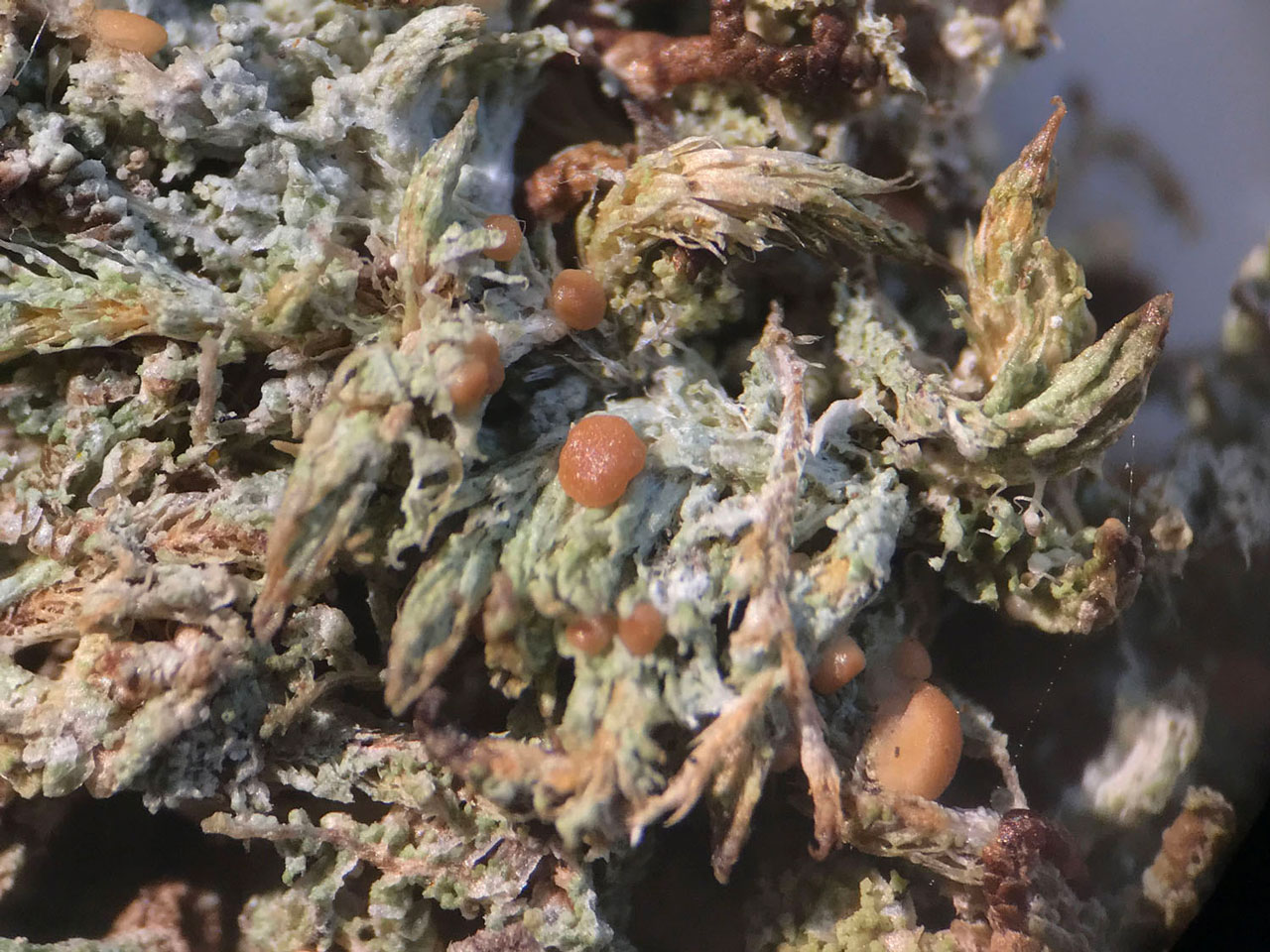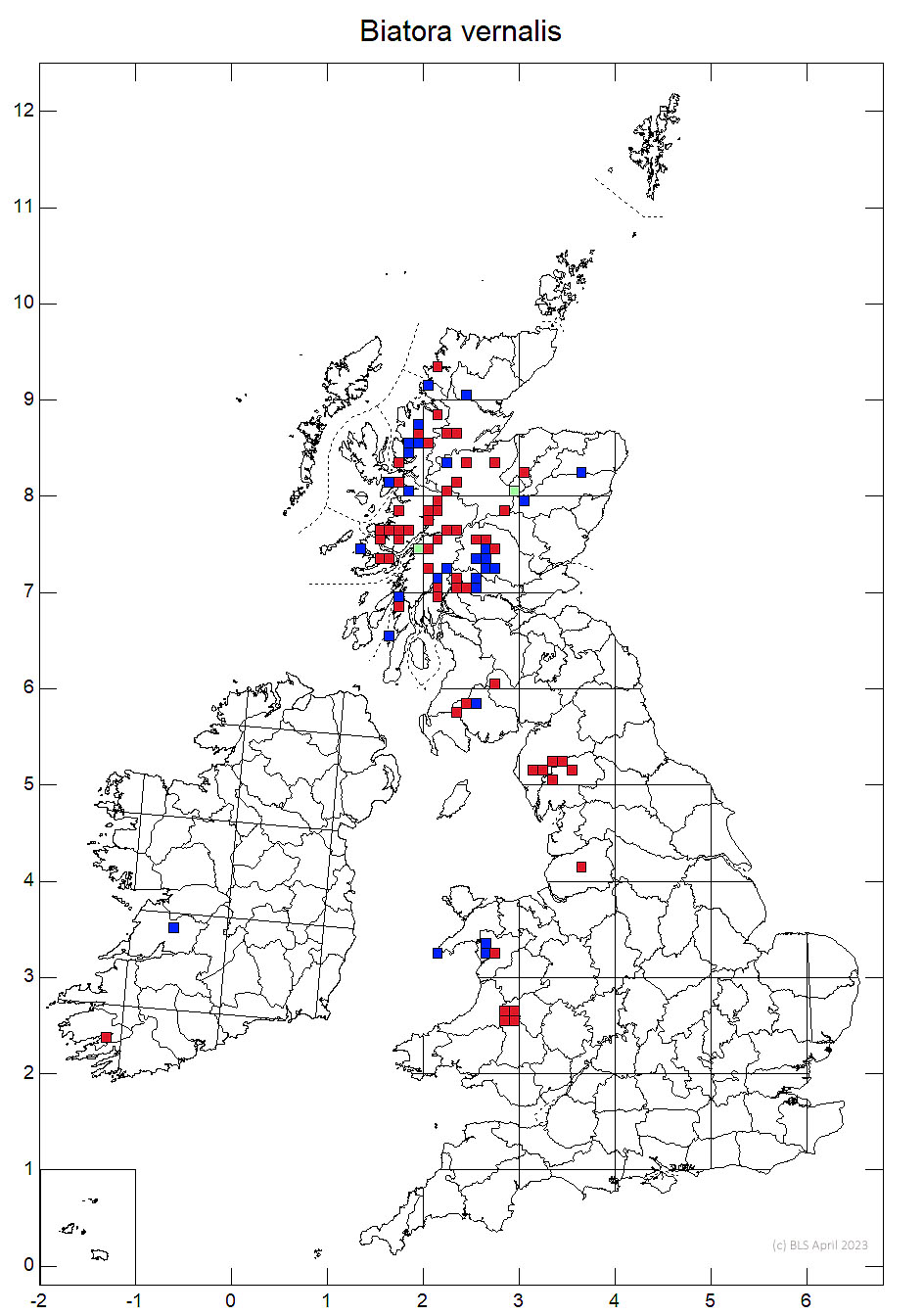Biatora vernalis
An attractive lichen when fertile, with convex, orange- to red-brown apothecia on a granular-verrucose, green to grey-green thallus lacking soredia. It is frequently found sterile, however, when it is rather more difficult to identify, but the colour and granular-verrucose form of the thallus are reasonably distinctive. Occasional to rare on mildly acid bark in old growth upland woods.
Thallus irregularly wrinkled to granular-verrucose, rarely forming a ± smooth crust on mosses, not sorediate, green to grey-green (turning beige to brownish in the herbarium); warts 0.1–0.25 mm diam. Apothecia 0.35–1.2 (–1.4) mm, weakly to strongly convex, sessile with a constricted base, orange- to red-brown; margin not or only weakly prominent, soon excluded, paler than the disc; true exciple colourless or yellowish to orange-brown inside and near the hymenium, 50–100 μm broad; hymenium 45–65 (–95) μm high, colourless or pale orange-brown; subhymenium 40– 70 (–120) μm high; hypothecium 95–300 μm high, like the hymenium in colour. Ascospores (10–) 12–20 (–25) × 4–6 (–7) μm, 0 (-1)-septate, ellipsoidal. Lichen substances not detected by TLC.
Distinguished from Mycobilimbia sphaeroides by its more coarsely granular thallus and mainly aseptate ascospores. British material is often sterile but the absence of soralia separates it from Mycobilimbia epixanthoides, Biatora chrysantha and Megalaria pulverea, and the Pd– thallus separates it from Phyllopsora rosei. Megalospora tuberculosa has a softer, usually greenish yellow thallus and contains usnic acid and zeorin. The most difficult split is with the frequently sterile B. vernalis thalli and occasionally sterile thalli of Bryobilimbia sanguineoatra, which grows in similar habitats. The thalli of Biatora vernalis are conspicuously wrinkled to verrucose and are quite bright grey-green with yellow tinges; Bryobilimbia sanguineoatra has a smooth membranous and varnish-like continuous thallus which is darker grey- green with no yellow tinges.
A useful key to species of the B. vernalis group can be found in Printzen et al. (2016).
In old upland woodlands on mildly acidic mossy tree trunks (especially Quercus); rare on sheltered mossy rocks.

Upland Wales, N.W. England, Scotland, mainly western but also found occasional the eastern Highlands
Widespread in the western Highlands, but rather scarce beyond, and generally dependant on the maintenance of well lit old growth woodlands.
Britain: Notable
Wales: Near Threatened
Cannon, P., Ekman, S., Kistenich, S., LaGreca, S., Printzen, C., Timdal, E., Aptroot, A., Coppins, B., Fletcher, A., Sanderson, N. & Simkin, J. (2021). Lecanorales: Ramalinaceae, including the genera Bacidia, Bacidina, Bellicidia, Biatora, Bibbya, Bilimbia, Cliostomum, Kiliasia, Lecania, Megalaria, Mycobilimbia, Phyllopsora, Ramalina, Scutula, Thalloidima, Toninia, Toniniopsis and Tylothallia. Revisions of British and Irish Lichens 11: 1-82. Link
Printzen, C., Halda, J.P., McCarthy, J.W., Palice, Z., Rodgriguez Flakus, P., Thor, G., Tønsberg, T. & Vonrák, J. (2016). Five new species of Biatora from four continents. Herzogia 29: 566-585. Link
Text by Neil A Sanderson based on Cannon et al (2021)




